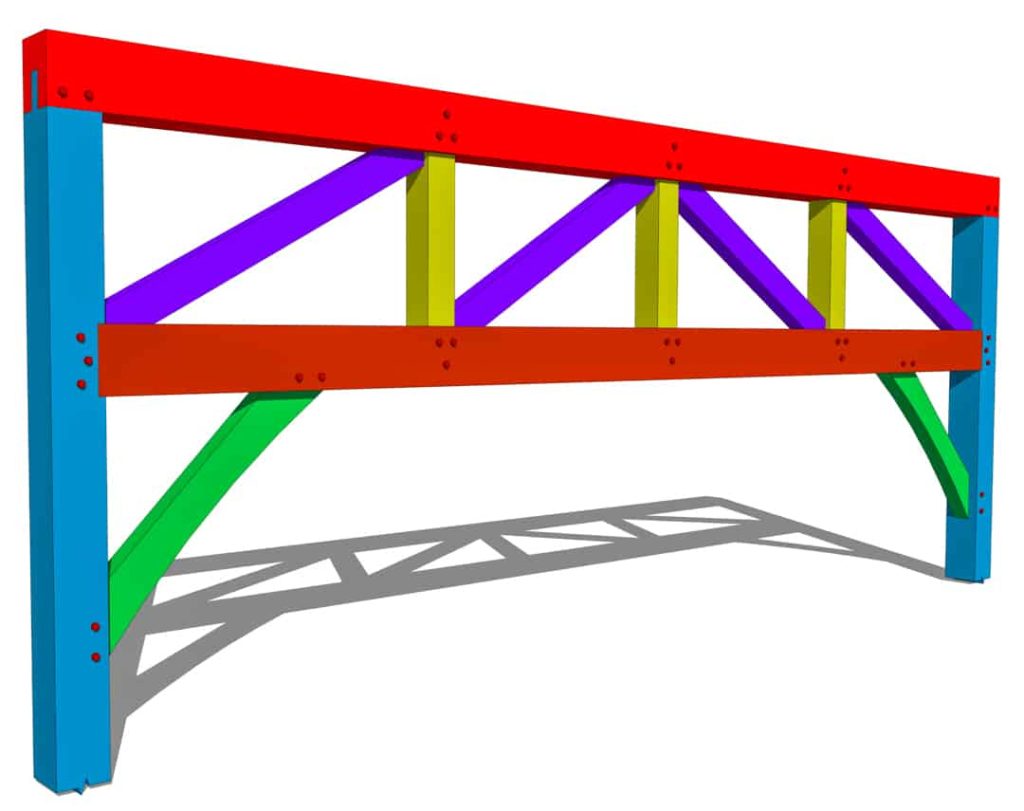
A parallel chord truss is different from most other timber frame trusses in that it is not triangular in shape. They have a rectangular design, with the top and bottom chords (the long straight elements of the truss) strengthened and spaced by intermediate elements called webs. There are different configuration options for the webs as far as how many are diagonal and how many are vertical.
Parallel chord trusses, also called girder trusses, are often used to support traditional trusses, rafters or purlins. They are extremely strong, so they can often span longer distances than traditional trusses. They are a good solution when trying to span a distance without needing a central supporting post. With this type of truss, the top chord is always in compression, and the bottom chord is always in tension. The webs might be in either tension or compression depending on their angle.
Parallel chord trusses may be used to support a second floor or a roof system. They are a good solution in a lean-to roof that needs to span a long distance. And there is a variation called a vaulted parallel chord truss that supports a vaulted roof with sloping cords that have an identical top and bottom pitch. Vaulted parallel chord trusses are a possible solution when a steep interior vaulted ceiling is desired.
Parallel chord trusses, like other truss types, are also used in conventional framing. But there is nothing so strong and attractive as a parallel chord truss made of heavy timber and assembled with traditional mortise and tenon joinery.
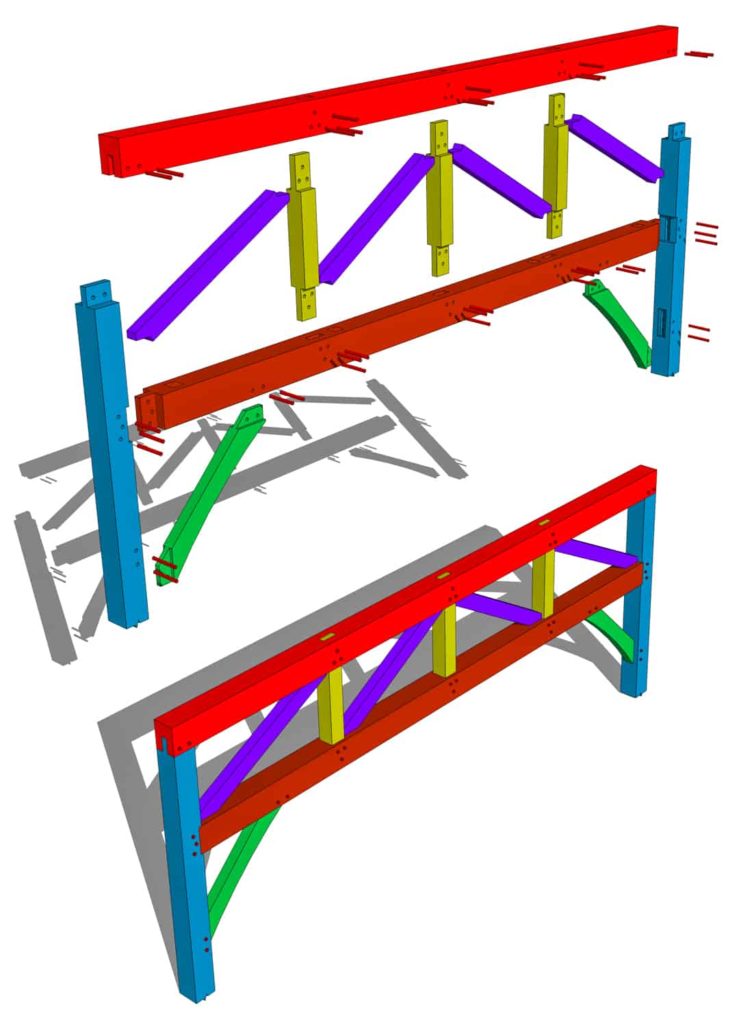
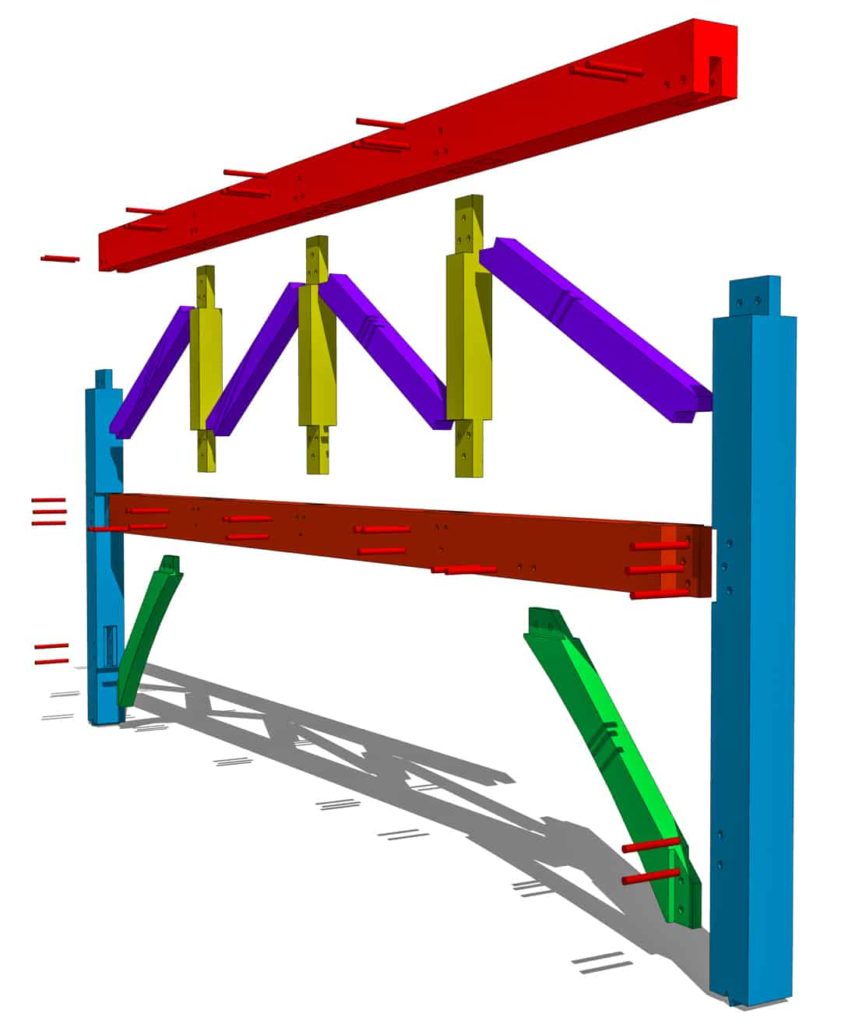
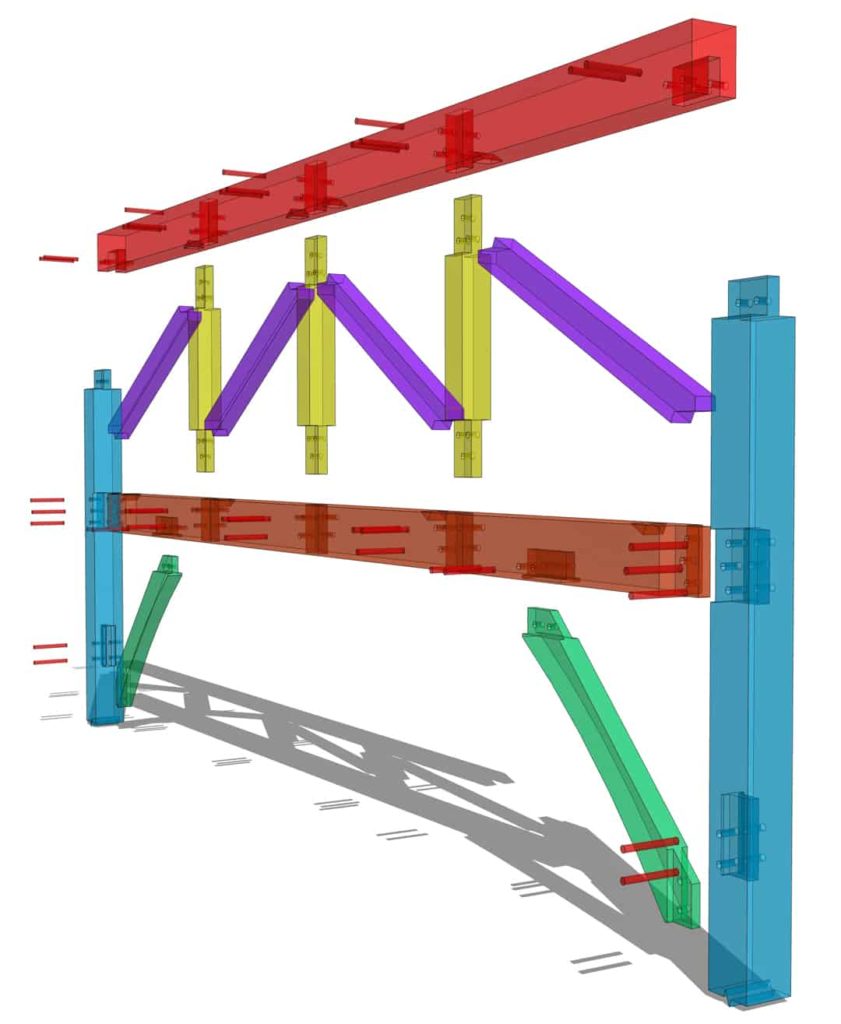
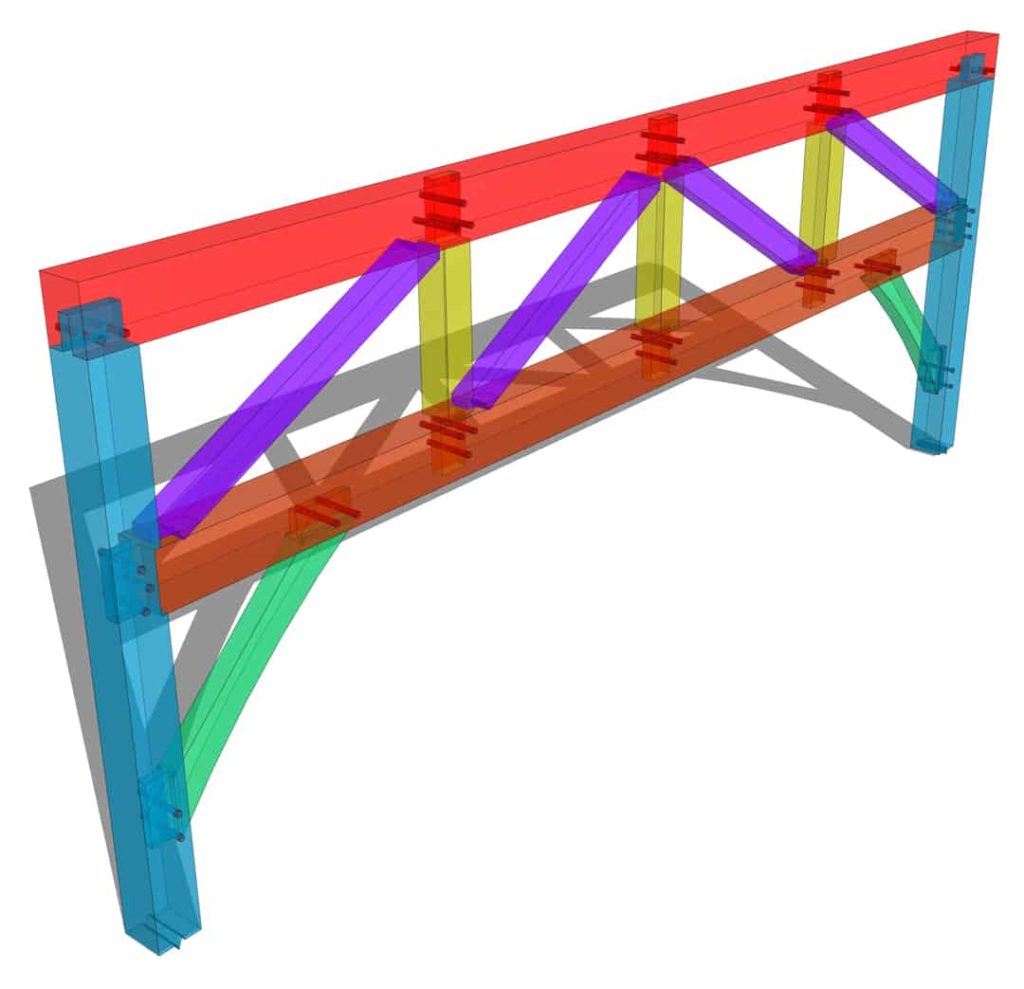
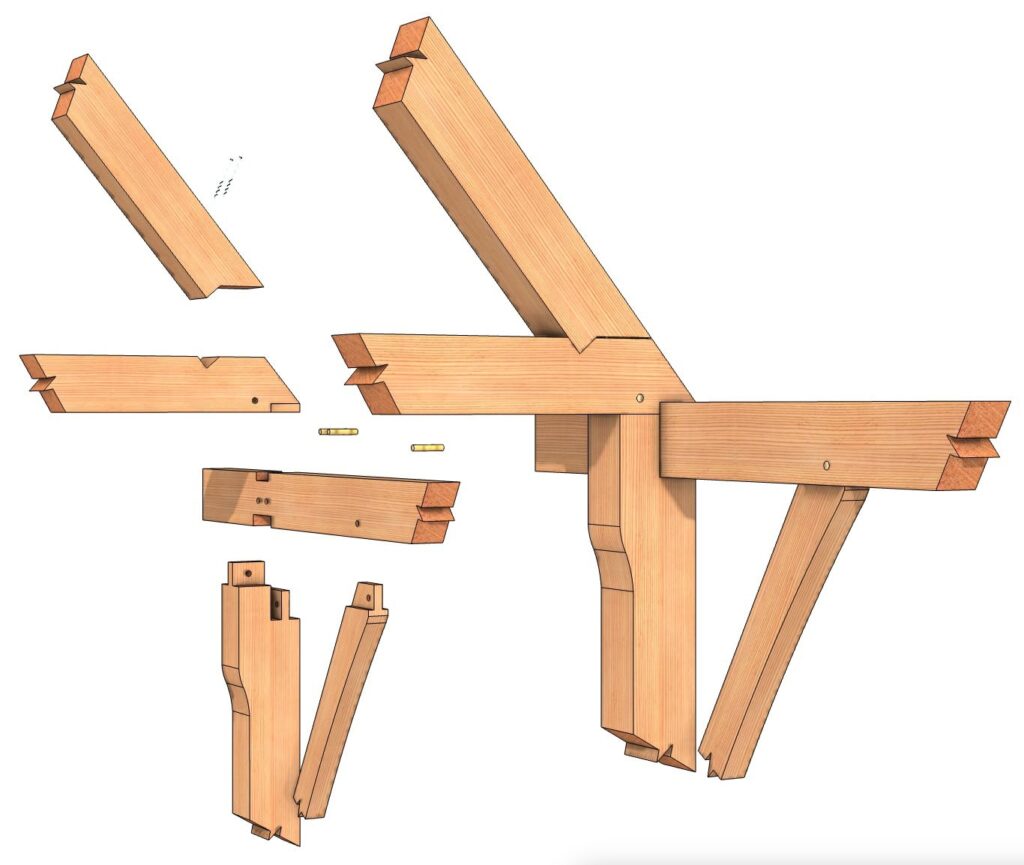
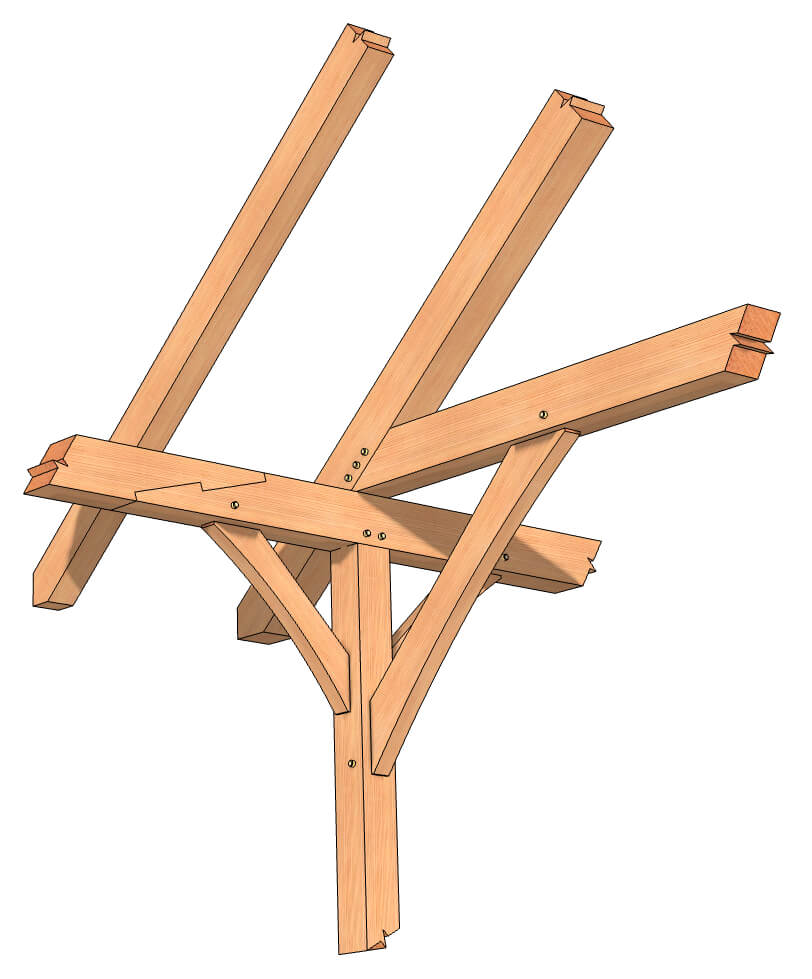
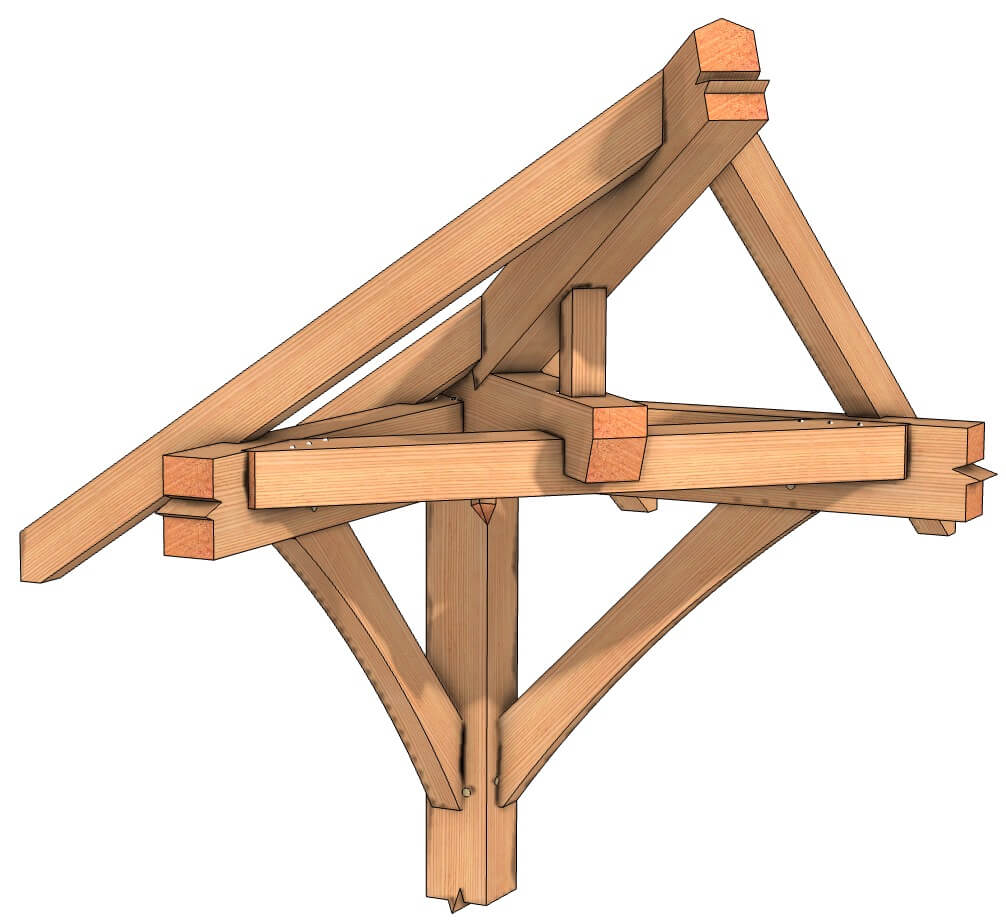
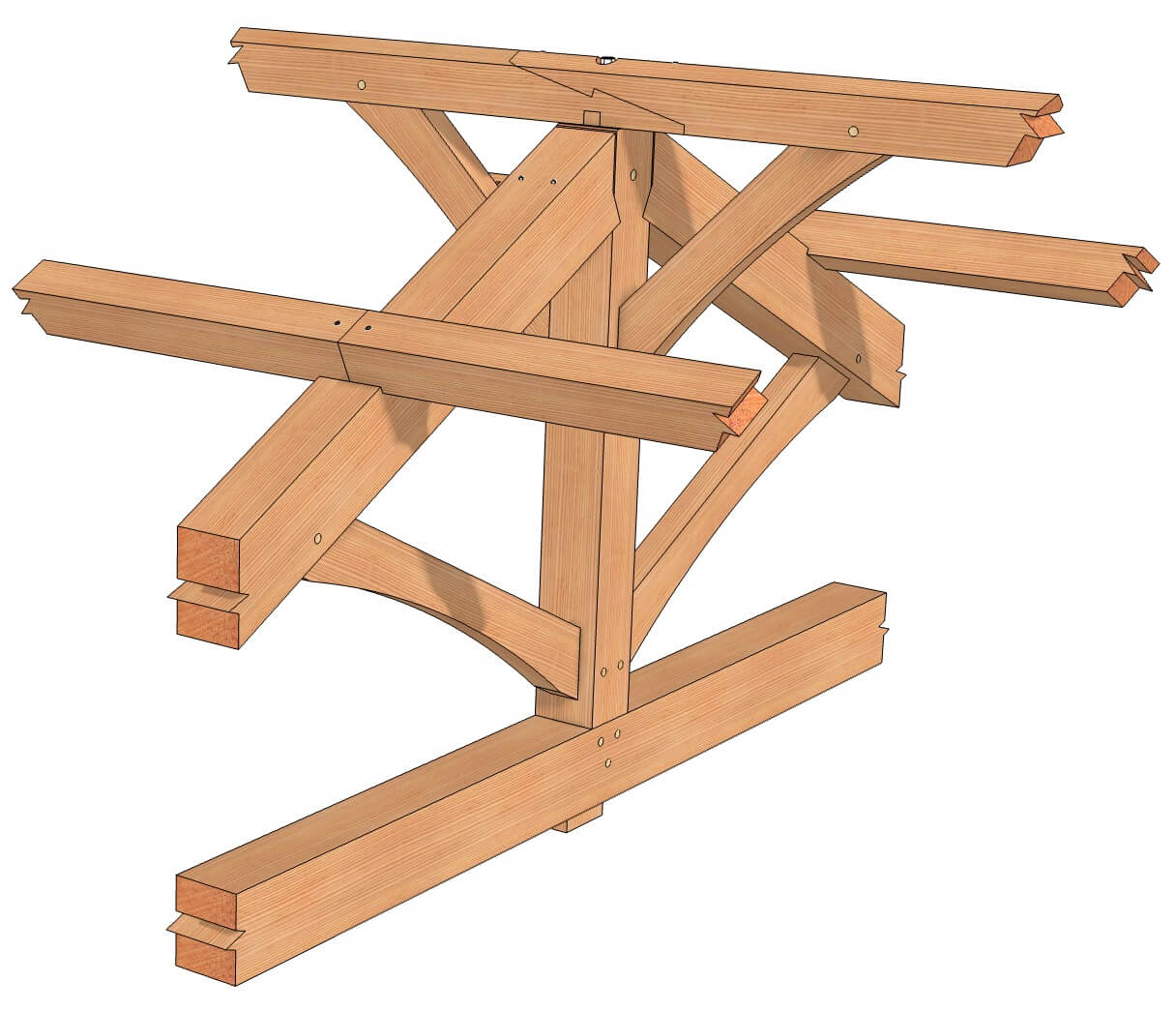
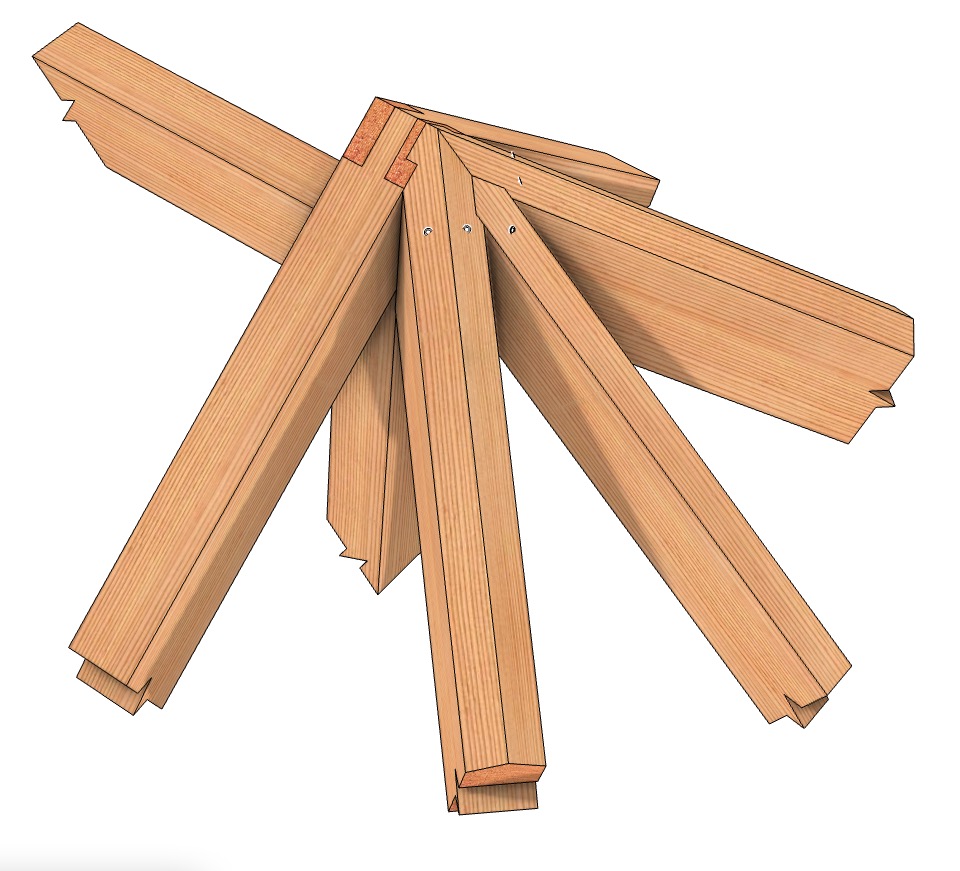
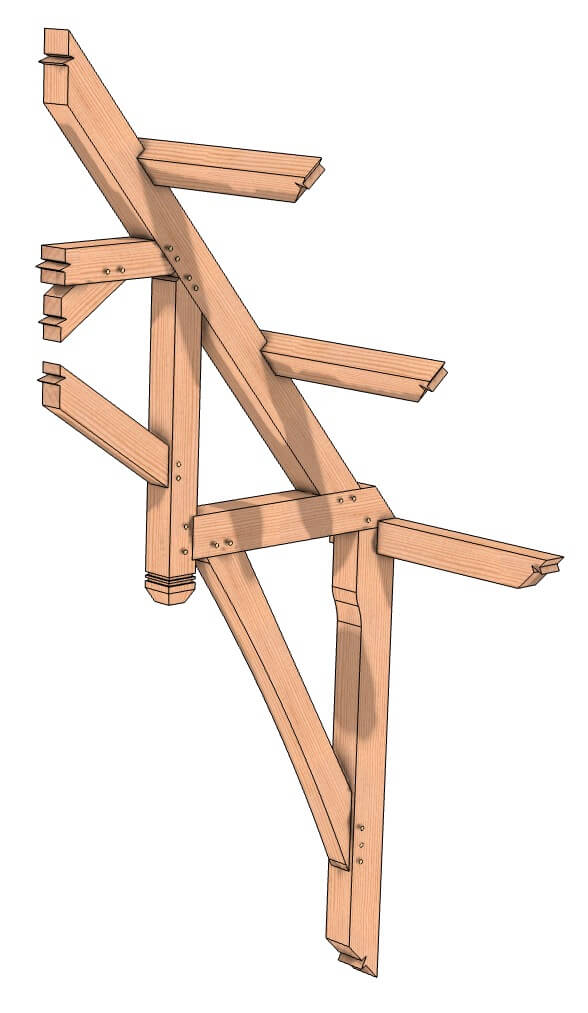
Are the braces actually necessary since the diagonal webbing would also brace the structure against racking?
While I applaud the educational nature of these features, you could benefit from having one of the Guild’s engineers take a look at this truss. Your design has most of the joinery under tensile loads, which timber doesn’t handle well. Those diagonals (purple), are forcing joints apart. Assuming loads only on the top chord, with only slight modifications, the joints can be in compression or shear which timber easily accommodates. If the bottom chord is loaded, there will be tensile loading at some joints but much less than in your configuration.
Yes the braces are pivotal in this design.
Thank you for chiming in Jack. This truss was recently part of the frame we recently designed for a gentleman in CO, Moyer Fountain from TFHQ was the designer and Joe Miller from FTET was the engineer of record. I must admit that my knowledge of the loading of these trusses limited so I reached out to Joe to get his input.
From Joe,
“When thinking of parallel chord trusses, it is normally best to think of normal “beam” behavior, as far as what forces they are attempting to resolve.
That is, in a standard beam, loaded on top, put into bending, the top is in compression, the bottom is in tension. On a parallel chord truss, loaded the same way, the bottom chord is primarily in tension, and the top chord is primarily in compression. The farther we separate the top and bottom chords, the deeper the “beam”, and thus the more efficient the section. But, we need to resolve the compression in the top chord with the tension in the bottom chord, which is the “shear flow” in a normal beam. In general, the best method to do this is with sloped struts, loaded in compression. We can use normal “bearing” joinery for the struts, which is fairly easy to cut at an angle, so the struts push down and out – and thus the heaviest loaded joints in the truss are resolved entirely with the wood bearing on wood. We also need to tie the top and bottom chords together with something, and, that is the point of the verticals, which are loaded in tension, albeit quite a bit less than the compression force in the struts. Also, since the struts, all land with a heel joint to the bottom chord, provided we have sufficient relish, the joinery of the bottom chord and top chord to the posts are primarily transferring vertical loads only (ignoring any racking from lateral loads).
That is the basic premise of this style of truss in a nutshell. If the diagonals went the other direction (started at the outside near the top, and went down and in), then they would be loaded primarily in tension, with the verticals in compression. One way is not “better” than another structurally, but, the sloped birdsmouths of the struts tend to be easier to fabricate for compression joints and the more lightly loaded verticals can function with mortise and tenon joinery.
Sometimes it is nice to think of this style of parallel chord trusses as a “multiple king post” truss – a misnomer perhaps, but, it tells you how the center king posts/struts are behaving, which each additional pair doing the same. If we added arches, we’d be approaching a “Burr arch”.”
I guess I should be taking these issues up with Joe then, but if some of those diagonals join to the verticals instead of the horizontals, there is much less tension in the joinery.
I would be interested in what comes out of your discussion with Joe and reflect on the outcome here.
Me too!
If the diagonals join the verticals directly, then the verticals would not be in tension. But, the vertical to top/bottom chord connection would be in fairly substantial amount of shear, which can drive the vertical post size quite rapidly. And if framing with green / unseasoned material, shrinkage of the verticals results in movement of the diagonals, which can exaggerate deflection. Likewise, verticals to top/bottom chord would result in compression perpendicular to grain bearing on the post, which is normally a smaller capacity than at an angle to grain (like the diagonal directly to the bottom chord with a heel joint).
So from a structural point of view, the addition of a few tension connections is commonly more than balanced with the efficiency of the struts directly to the chords.
Ultimately, which is the best choice depends on a variety of factors, including load, span, spacing between chords, quality and species of material, etc. And, frankly, aesthetics, and framing preference. As with most things timber framing, there are normally multiple right answers.
In this case, the braces are helping for racking / lateral loads, and while they help a bit with vertical loads (there very presence means they take some load, whether we intend for them to or not), that is not their primary function.
Traditionally, the posts are often deeper in section, and often jowled at head and foot for better bearing. This is more than adequate for shear forces. Also, if the centerline of the diagonal when extended into the post remains on the post where it attaches to the tie beam, there is no shear on the post. If it runs off the post before reaching the tie, there is shear. Concerning compression on the post tenons, a housing and the tenon are usually ample.
As for shrinkage from using unseasoned timber, the truss as drawn will sag too because each of those tension joints will pull away somewhat as the timber dries and the pegs compress. Joints in compression don’t pull away when they dry. Traditionally, trusses were built with camber to make up for the effects of unseasoned wood.
Timber trusses have been around since at least Roman times, all these lessons have been learned ages ago. We can still learn from the old work.
Hi Jack,
I’m flattered to hear you chime in. I hear you loud and clear. Although, this assembly will perform in its place, I understand your comments and find them analogous to designing struts in a Kingpost Truss to bear on the Kingpost (with enough relish between the bearing surface and bottom chord with its most likely in plane tenon) as opposed to bearing on the Bottom Chord. This specific example did not create a geometry that was pleasing to the eye if done so accordingly, so we went the way you see it now.
Thanks for you lifelong efforts.
Best,
Moyer
Could this truss be engineered to span say 40 ft?
Yes, it has been done before.
Very good explanation from Joe. Many thanks. Those purple members are working in compression. It’s the opposite than in steel, where tension is preferable, but here, because of the joints and a better behaviour there of the material in compression, it is clearly better with bearing joinery.
Could this be built with top and bottom chords made out of two or more pieces joined by scarf joints to make a longer chords is one piece lumber are not available?
Bryan, scarf joints are a great way to create a longer timber. When in doubt, it’s always best to consult an engineer with the specifics of your case.
Do you have any plans with this in a lean-to shed that would work as a sawmill building?
This detail came from this plan: https://timberframehq.com/shop/20×20-lean-to-plan/